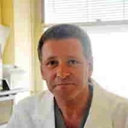Th2-like cytokine activity in dermatitis herpetiformis.
Ključne besede
Povzetek
Dermatitis herpetiformis (DH) is a chronic subepidermal blistering disease, in which a perivascular cellular infiltrate, composed mainly of CD4+ T lymphocytes together with a varying number of neutrophils and eosinophils, is thought to be important in the pathogenesis of blister formation. The aim of this study was to investigate the potential role of cytokines such as the interleukins IL-4 and IL-5 and to quantify the distribution of T cells as well as their state of activation using alkaline phosphatase-antialkaline phosphatase and reverse transcriptase-polymerase chain reaction (RT-PCR) procedures in seven patients with typical clinical and histological features of DH. A strong extracellular staining with anti-IL-4 monoclonal antibody was detected in the upper dermis with a prevalent perivascular pattern in perilesional areas, whereas in the dermal-epidermal separation sites there was an intense, scattered distribution. IL-5 was intensely expressed, mainly at the intracellular level, by eosinophils and lymphocytes. Concerning RT-PCR, five DH patients showed a strong positive signal for both IL-4 and IL-5 cytokines while two patients showed a faint signal for both IL-4 and IL-5; these last two cases were histologically poor in inflammatory cells. In view of these results, it can be hypothesized that the recruitment of eosinophils and neutrophils in DH may be induced not only by granulocyte macrophage colony-stimulating factor and IL-8 as previously demonstrated, but also by Th2 cytokines as well.



